Nothing says ‘summer’ like an abundance of blooms loosely arranged in an eclectic assortment of antique vases. From Mid-Century glass to Indian metal vessels, here's everything you need to know about our favourite antique and vintage vases.
Oriental blue-and-white vases
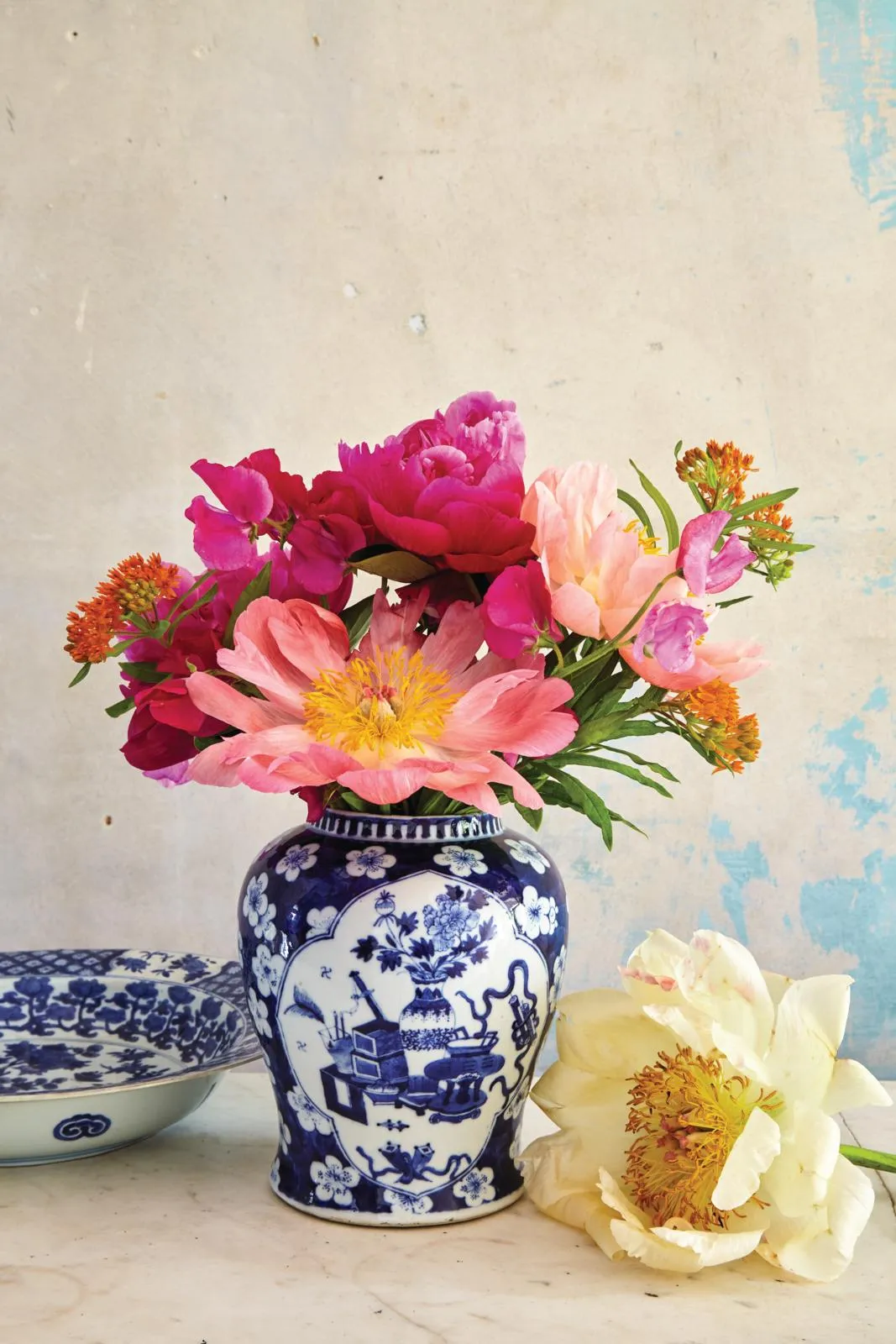
‘In the 1860s, lots of European collectors and interior decorators went mad for Chinese blue-and-white porcelain. Feeding this demand, there was an explosion of brand new wares made in the 17th-century style. The most famous of these were the reproductions of sought-after ginger jars, some of which (the genuine ones) were fetching previously unheard of sums for ceramics,’ explains Lars Tharp, ceramics and oriental specialist and Antiques Roadshow expert. Retailers such as Liberty & Co imported great quantities of Chinese porcelain jars at this time, many containing tea or ginger.
Today, these small, spherical jars have often been separated from their dome-shaped covers but make attractive vases and can be picked up for £20 each. ‘Larger ginger jars can be more expensive and are often found converted into lamps,’ says Tharp. Oriental blue-and-white vases intended for a mantelpiece or shelf were often made in pairs or in sets of five (so-called garnitures) to appeal to the European market. A pair of small Japanese vases, made in Arita in the last quarter of the 19th century, can fetch £80–£120 at auction, while a single vase, separated from its pair, would fetch 30 to 40 per cent of its pair value.
In the 1790s, Staffordshire potters ‘invented’ the willow pattern – a crowded coming together of decorative elements seen in Chinese imports of the 17th and 18th centuries. ‘The lovely irony is that as soon as the Chinese saw examples of English willow pattern pottery, they copied it – a real ricochet of cross-continental styles,’ reveals Tharp. ‘A blue-and-white Chinese porcelain vase with a Qianlong seal mark (dating from 1735–1796) sold last year at Hansons, Derbyshire for £650,000,’ reveals Tharp. ‘The owners were pleasantly surprised; they had been using it as a doorstop.’
You might also like how to decorate with blue and white china
Japanese vases
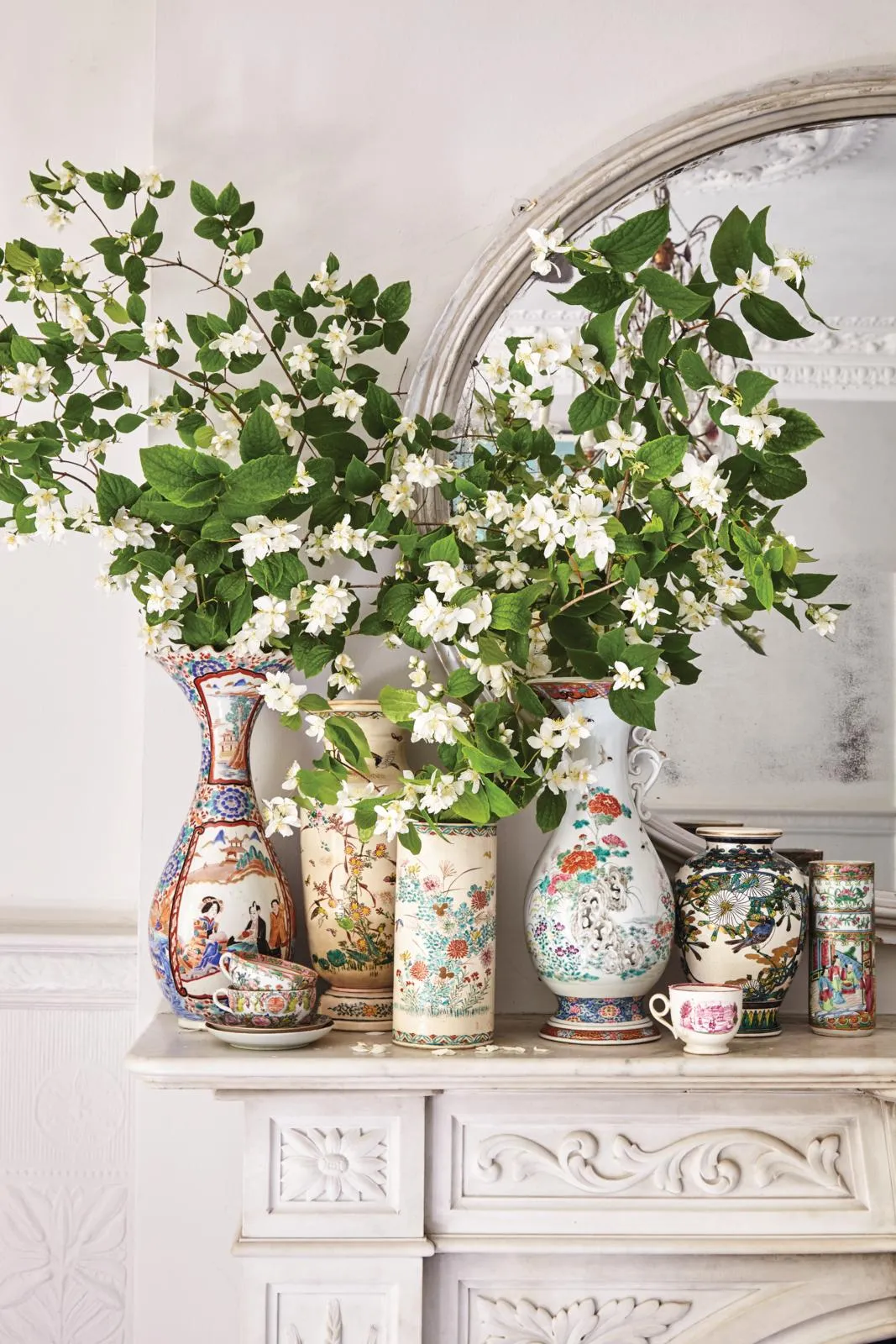
For over 100 years Japan isolated itself from the outside world by all but closing her frontiers, until 1854 and the Treaty of Yokohama, when Japanese trade with Western nations resumed. When Japanese pottery (mostly ‘Satsuma’ ware) and porcelain (‘Imari’, ‘Kutani’ and ‘Arita’ ware) flooded into Europe, the asymmetry of the designs took Europeans by surprise.
‘Much of this ceramic flood resurfaces at the Antiques Roadshow to general disappointment of owners,’ says Lars Tharp. ‘But occasionally a gem by Makuzu Kozan, from the Fukagawa factory, or by Kinkozan and Yabu Meizan will appear – these names commanding four and sometimes five-figure sums, while their mass-produced (transfer or stencil-printed) relations struggle to rise into three figures.’
Tharp says that a pair of Imari vases (with or without lids, from 12in to 27in) could start at £90 and rise to £2,000, although this assumes perfect condition, which is rarely the case. ‘Since the catastrophic Kobe earthquake of 1995, traditional Japanese works of art, from the 17th century to the early 20th century, have slumped in value, excepting those superlative examples of porcelain, metalwork or ivory carving from the highest – and very rarest – makers,’ reveals Lars.
Once you can tell the difference between hand-painted and transferprinted, and once you know your porcelain (translucent) from your earthenware (not translucent), you are on the right path. If you group a few together, they can provide an attractive focal point. ‘In an uncluttered, white interior, a splash of Imari or Kutani and maybe even Satsuma, will leap out of a cool background,’ says Lars. ‘Rather than buying a cheap, mass-produced vase, dig deeper into your pocket: buy a piece of real quality, something that will sustain.’ The timeless appeal of this style will never go out of fashion.
Majolica vases
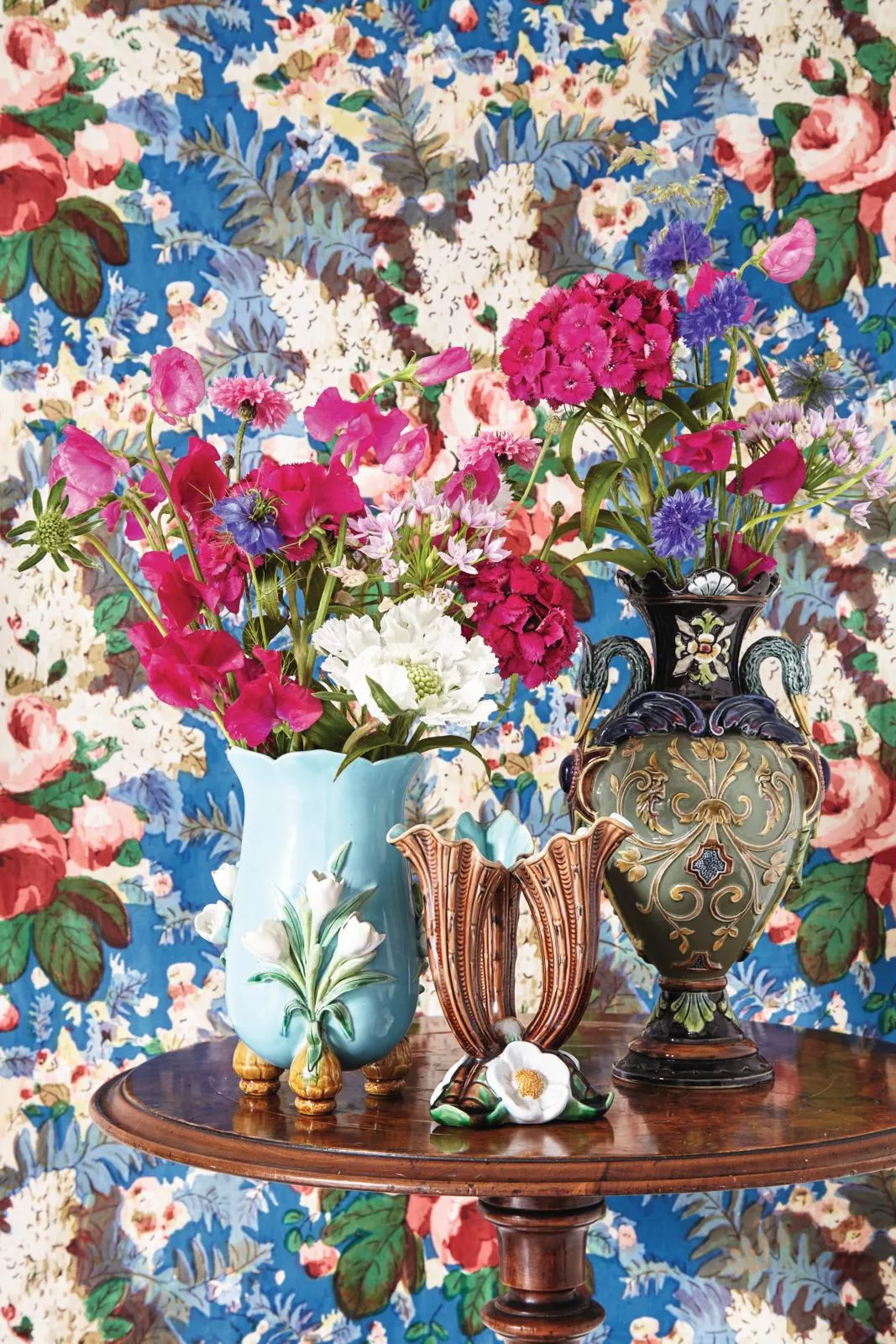
Inspired by European earthenware, English pottery Minton & Co launched a range of brightly coloured, low-temperature, lead-glazed pieces at The Great Exhibition in 1851 as ‘Palissy ware’, which later become known as ‘majolica’. Other potteries such as George Jones and Wedgwood began to manufacture their own versions and, by the 1880s, the name majolica was commonly applied to all such wares, whether made by Minton or not.
‘Majolica vases are very ornate,’ says Ben Tulk, director of Madelena Antiques & Collectables. ‘The majority are decorated with Darwin-related naturalistic designs, adorned with flora and fauna such as cockerels, peacocks, frogs, lizards and flowers, but there are a few geometric ones, too.’
Prices start at around £10–£20 for a continental, unmarked majolica vase that’s damaged. At the top end, an exceptional marked vase of monumental scale by an English maker such as Minton or Jones could fetch up to £35,000. ‘There’s something to suit every budget so it’s easy to start a collection,’ says Tulk. ‘Also, the glazes are enduring, so majolica vases can still be used for flowers today.’
You might also like what is a makers' mark?
Bohemian enamelled glass vases
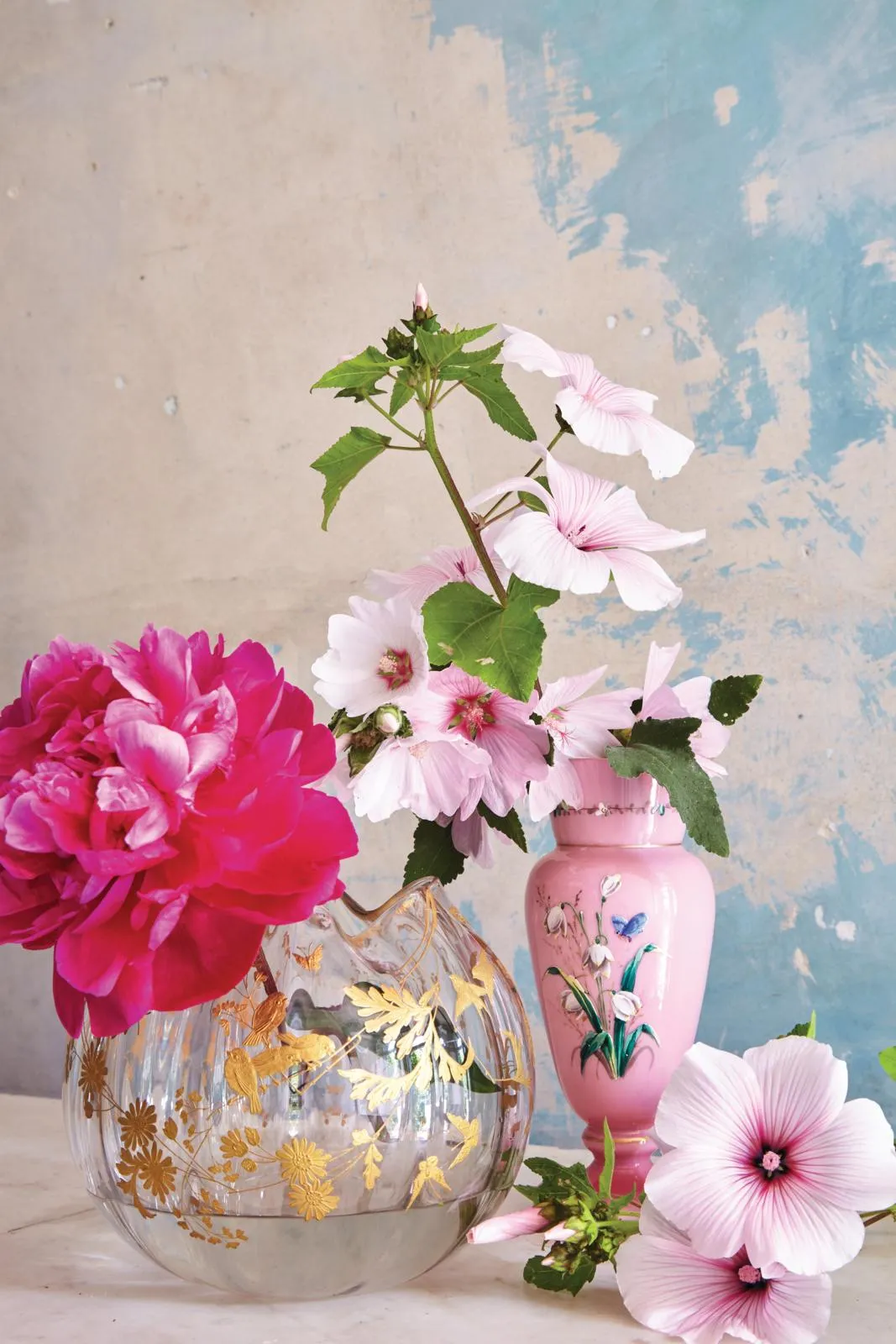
Bohemia (now a region of Czech Republic) has long been associated with hand-painted glass. ‘Since the 13th century, this area has been a centre for stained glass windows, which are decorated in an identical manner to enamelled glass vases, so the tradition is historic,’ explains glass specialist and owner of Glass Etc, Andy McConnell.
Production peaked in the late 19th century, with opulent pieces by makers such as Moser and Lobmeyr at one end of the scale and cheaper, mass-produced vases at the other. ‘If a woman was getting married, typically, all her colleagues would chip in to buy her a pair of enamelled vases,’ says McConnell. ‘They were often kept in the parlour and guarded with ferocity, so they survive in incredible numbers.’ They can be picked up for just £10 a pair. An important pair of large, glass vases by Moser from this same period could fetch up to £20,000.
Mid-Century Scandinavian glass vases
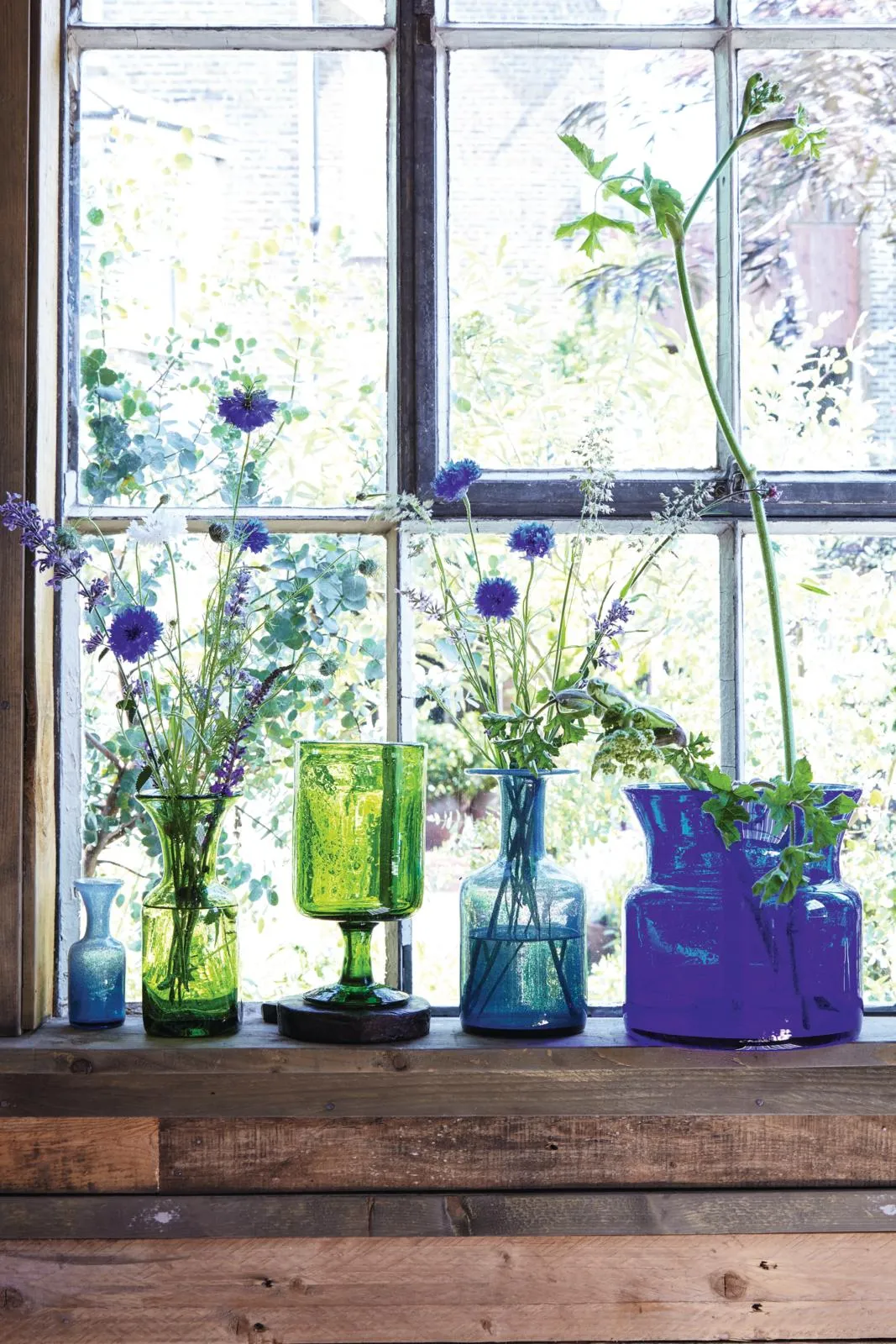
Sweden was the most important glass-making nation during the mid-century period. It manufactured sleek, understated vases, mostly in the Småland region, which is in the south of the country and still renowned for production, currently having 13 glassworks and studios. ‘The Scandinavians coined the ‘Modernism’ look,’ says Andy McConnell. Asymmetrical shapes were popular and the palette was restrained: greens, greys and blues.
Prices vary – more common pieces can fetch as little as £20, but rarer vases or matching groups can sell for more. A trio of 1960s vases by Swedish designer Nils Landberg (for leading manufacturer Orrefors) costs around £600. Vases designed by Erik Höglund, such as those pictured above, are good entry level examples, starting from £55.
‘The most expensive piece of Swedish glass ever sold at auction was a mid-century ‘Graal’ (grail) vase by designer Edvin Öhrström, which sold for £100,000 a few years ago,’ reveals McConnell. ‘Gerda Strömberg was the greatest of the Modernist glass designers in my opinion,’ he says. ‘Her lustrous colourless lead crystal vases look as if they have been hewn out of glacial ice.’ Other Scandinavians such as Per Lütken (whose vessels were made at Holmegaard factory in Denmark) made similar vases.
You might also like a 1920s London home with Scandinavian-inspired interiors
Indian metal vases
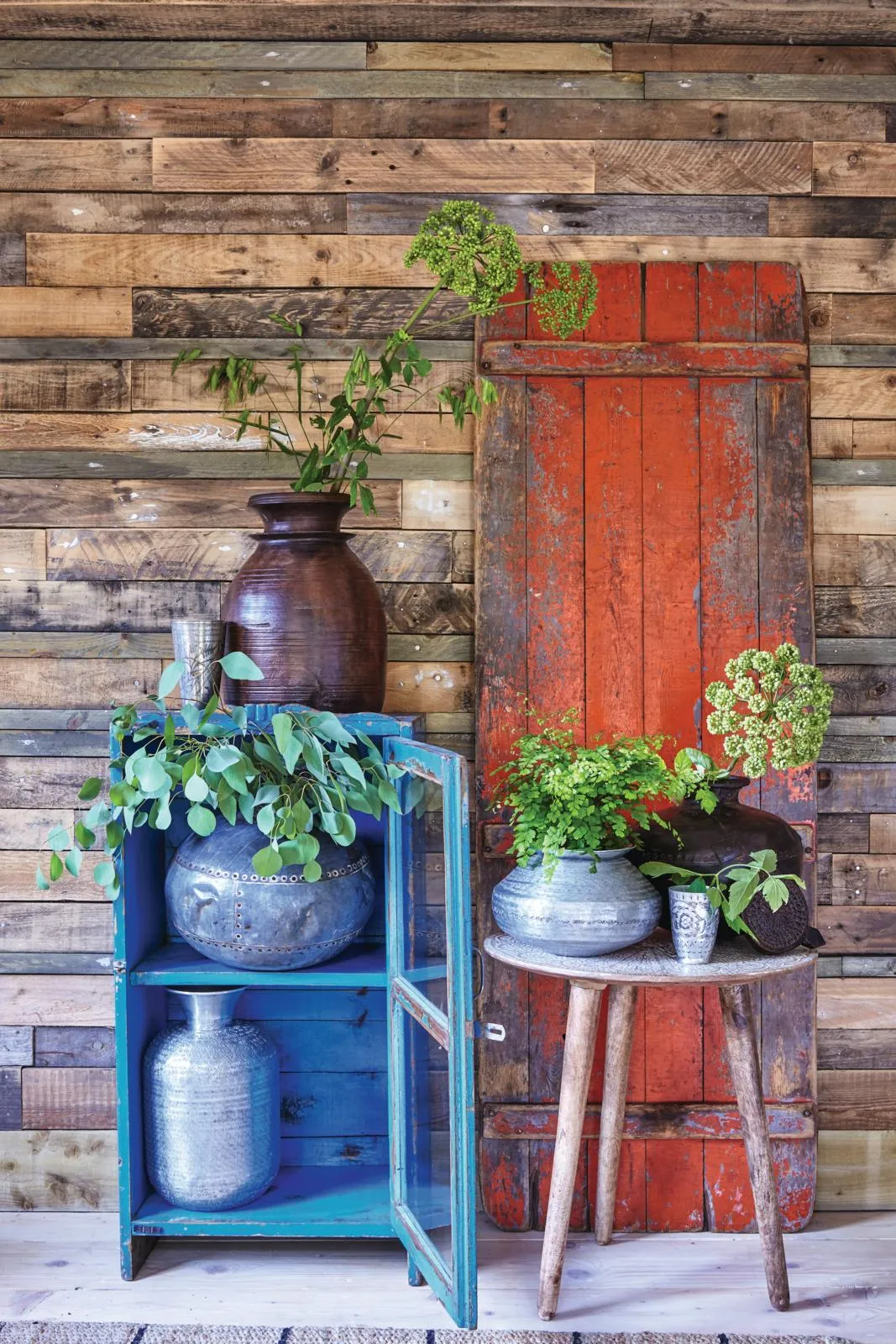
‘A lot of the vases that were produced in India during the 19th century were decorative and made for the colonial market. The vessels produced for the local market were less decorative – they were usually ritualistic or utilitarian,’ explains Michael Backman, managing director of Michael Backman Ltd, a London firm specialising in rare antique Asian, Islamic and colonial decorative arts. ‘In India at that time, flowers were used as offerings at altars and statues, but they were changed every day, so there was no need to preserve them in water.’
Many items that are catalogued as antique Indian metal ‘vases’ weren’t ever intended to be vases at all. ‘Lots of them are actually spittoons,’ says Backman. ‘In India, there is a tradition of chewing betel nuts and so there were lots of ornate metal spittoons (in silver or brass) produced; small ones for tabletops and larger ones that would be placed on the floor. The large ones are lovely used as vases for bigger blooms such as hydrangeas or lilies.’ Backman has a large Mogul floorstanding spittoon made of high-grade silver in stock at the moment that is for sale at £8,000. ‘It might have come from a sultan’s palace,’ he says. ‘It’s very fine.’
Similarly, the highly decorative metal bases of hookah pipes, used for smoking tobacco, are often sold and used as vases today. ‘They can be made of gold, silver, or bidri (a blackened alloy of zinc and copper, inlaid with thin sheets of pure silver),’ says Michael. Some of the most interesting hookah base vessels have blue and white ceramic bodies with a silver upper section, which were manufactured in China for the Indian market.
Many metal vessels were manufactured in Kashmir, which has a great deal of Persian influence and is a region that exported a lot of metalware to the UK, for retailers such as Liberty & Co. Bidri items were often made in Bidar, while Mogul pieces were made in the north, around Delhi.
Cheaper, engraved brass vessels, which were produced in almost industrial quantities, tend to be from Moradabad. ‘Prices for these simple, brass vessels start at around £100, but the most stunning metal containers, from a palace, adorned with semi-precious stones, can fetch as much as £750,000,’ reveals Backman. The cheapest metal Indian ‘vases’ available today are hand-beaten spherical ‘matki’ pots that were originally used as water carriers, with rivet detailing. Today, they’re around £75 each but many are no longer watertight, so if you want to use them as a vase you might need to place a small jam jar inside.
Constance Spry vases
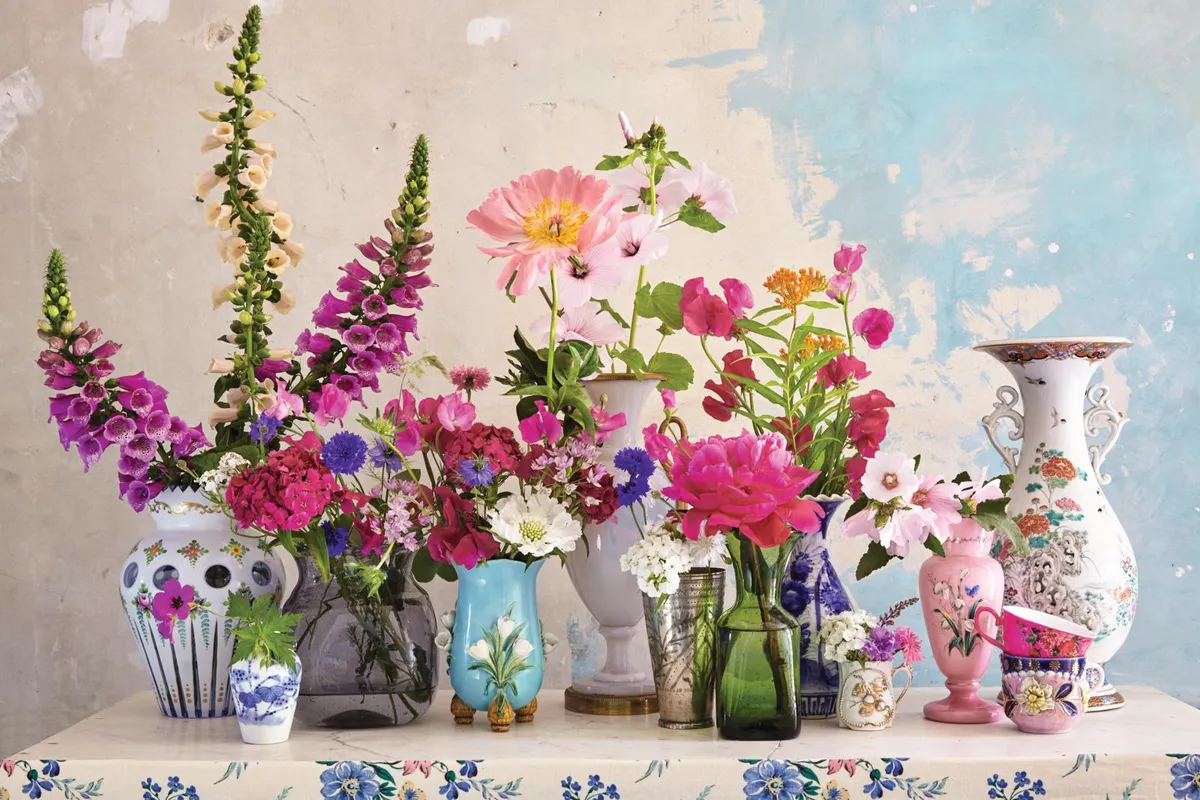
In 1935, florist Constance Spry (1886–1960) was fast becoming a famous taste-maker. Her first book Flower Decoration (1934) was a huge success and her asymmetrical floral arrangements that broke with convention were all the rage. ‘Constance Spry loved creating unusual, free-form displays with berries and kale leaves as well as flowers,’ reveals John Mackie, one of the founding directors of Lyon & Turnbull auction house in Edinburgh. ‘She couldn’t find the right vases to suit her creations, so she commissioned a range at Fulham Pottery.’
One of Spry’s employees, Florence Standfast, designed a 1935 Constance Spry collection of elegant, twinhandled ‘mantle’ vases inspired partly by ancient Greek and Egyptian forms (see facing page). ‘Spry wanted simple, plastereffect vases that were sculptural and classical – with a matt exterior and a glazed interior,’ explains Mackie. ‘The neo-baroque decorative plasterwork of Serge Roche influenced her too.’
Large, rarely seen designs from the range can fetch up to £2,000, but smaller, more common examples are much more affordable and often go for just £80–£100 at auction. ‘Of course, they look stunning filled with flowers, but they’re beautiful unadorned, too, just as a sculptural object on a mantelpiece,’ says Mackie.
In 1937, Fulham Pottery launched a similar line of vases called ‘Alber’ which was cheaper and more widely available than the Constance Spry range. There followed many later Constance Spry-style vases by other makers, so ensure you’re buying the real thing, not a repro.

